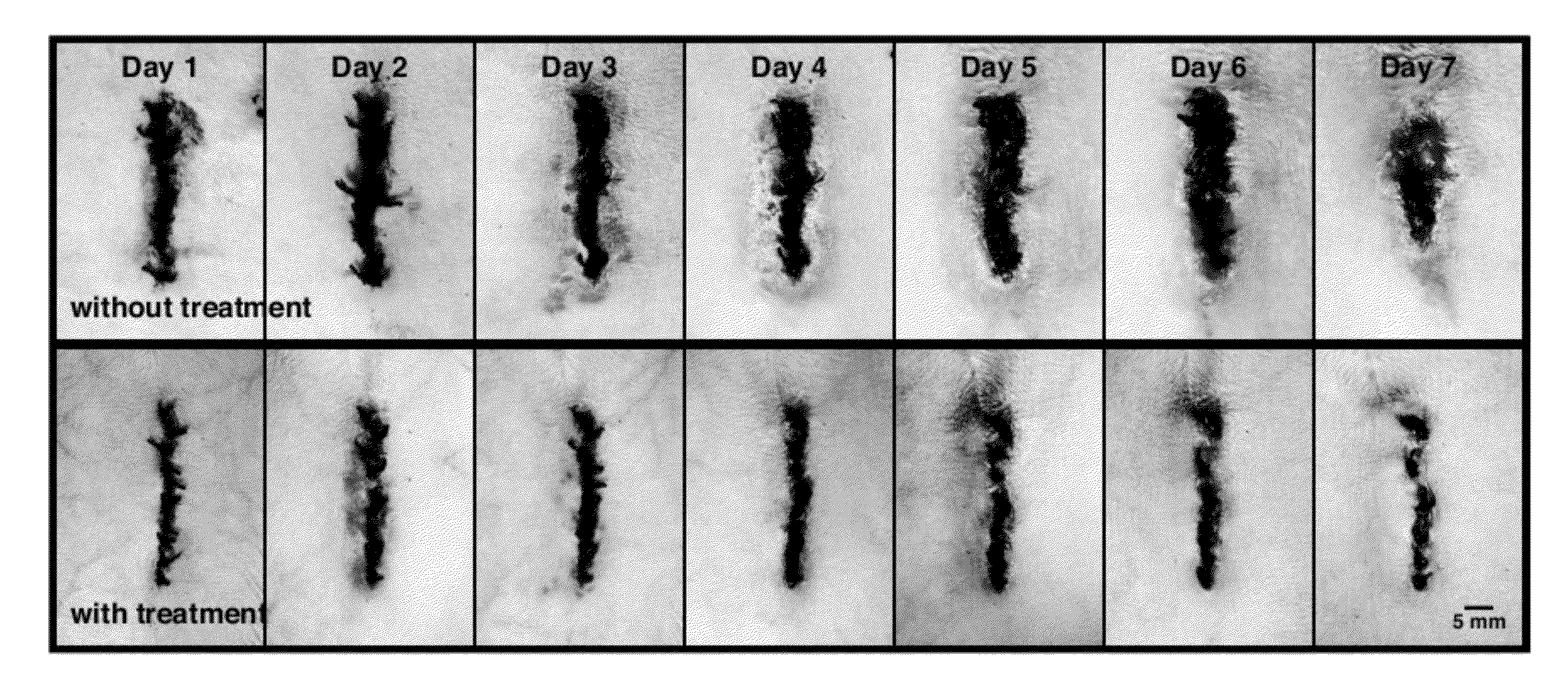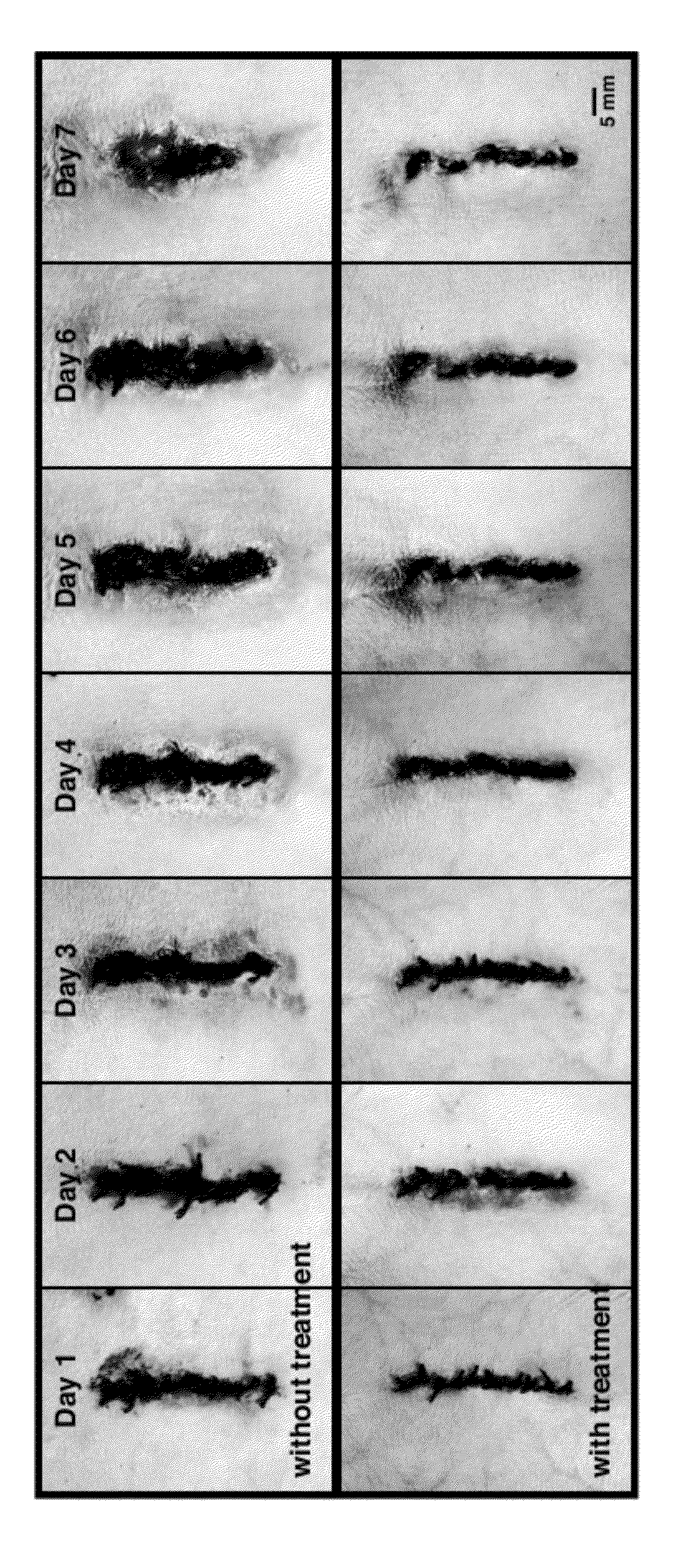Methods to Accelerate Tissue and Wound Healing Rates and Reduce Swelling and Scar Formation
a tissue and wound healing and scar formation technology, applied in the field of treatment procedures, can solve the problems of reducing the ability to mount an adaptive immune defense or wound healing in the lymphoid system, major damage to the abdominal lymph node system, etc., and achieve the effect of reducing scar formation and fibrosis
- Summary
- Abstract
- Description
- Claims
- Application Information
AI Technical Summary
Benefits of technology
Problems solved by technology
Method used
Image
Examples
Embodiment Construction
[0024]The present invention serves to reduce the healing time of tissue wounds, including those formed during surgery, whether necessary or elective (including cosmetic surgery). Methods according to the present invention serve to restore defective cellular wound healing functions that are compromised in the presence of degrading digestive enzymes and by the cytotoxic mediators that produce for example in the intestine (e.g. cytotoxic unbound free fatty acids) by receptor cleavage and direct cytotoxic activities of tissue fragments generated by digestive enzymes. Thus, the present invention provides a better alternative to treating wounds than conventional method wherein in certain examples such as at skin closure sites, methods according to the present invention result in reduced redness, swelling, exudates amount, tissue indurations, and scab formation around the incision site, as compared to untreated controls.
[0025]The present invention provides for treatment which is novel and ...
PUM
| Property | Measurement | Unit |
|---|---|---|
| swelling | aaaaa | aaaaa |
| healing time | aaaaa | aaaaa |
| volume | aaaaa | aaaaa |
Abstract
Description
Claims
Application Information
 Login to View More
Login to View More - R&D
- Intellectual Property
- Life Sciences
- Materials
- Tech Scout
- Unparalleled Data Quality
- Higher Quality Content
- 60% Fewer Hallucinations
Browse by: Latest US Patents, China's latest patents, Technical Efficacy Thesaurus, Application Domain, Technology Topic, Popular Technical Reports.
© 2025 PatSnap. All rights reserved.Legal|Privacy policy|Modern Slavery Act Transparency Statement|Sitemap|About US| Contact US: help@patsnap.com


